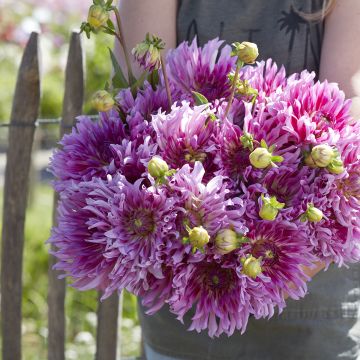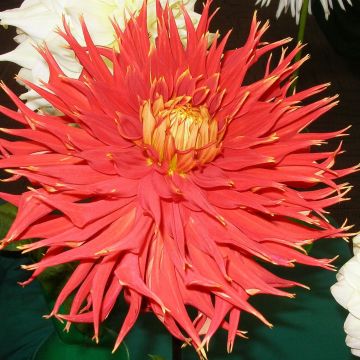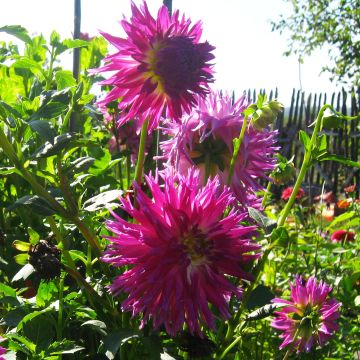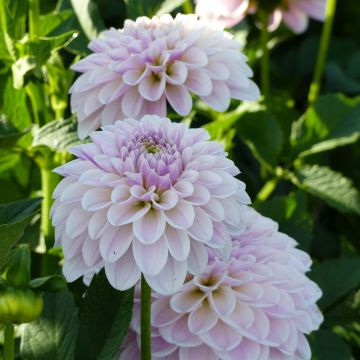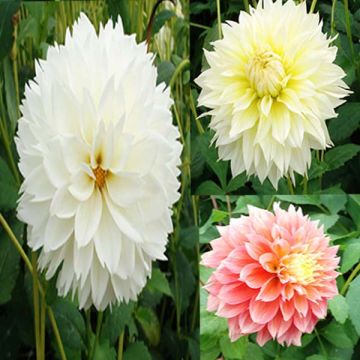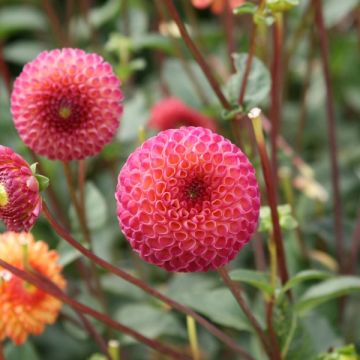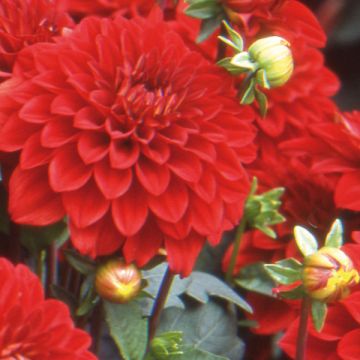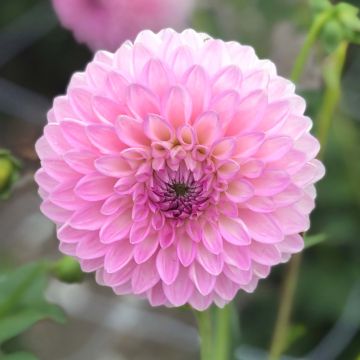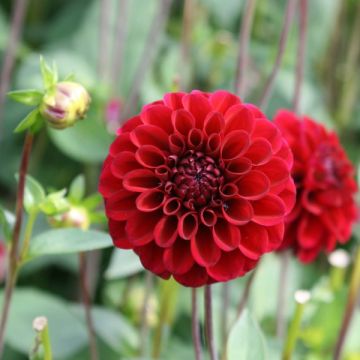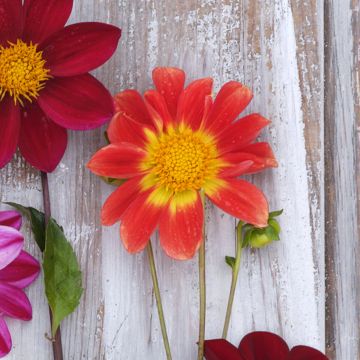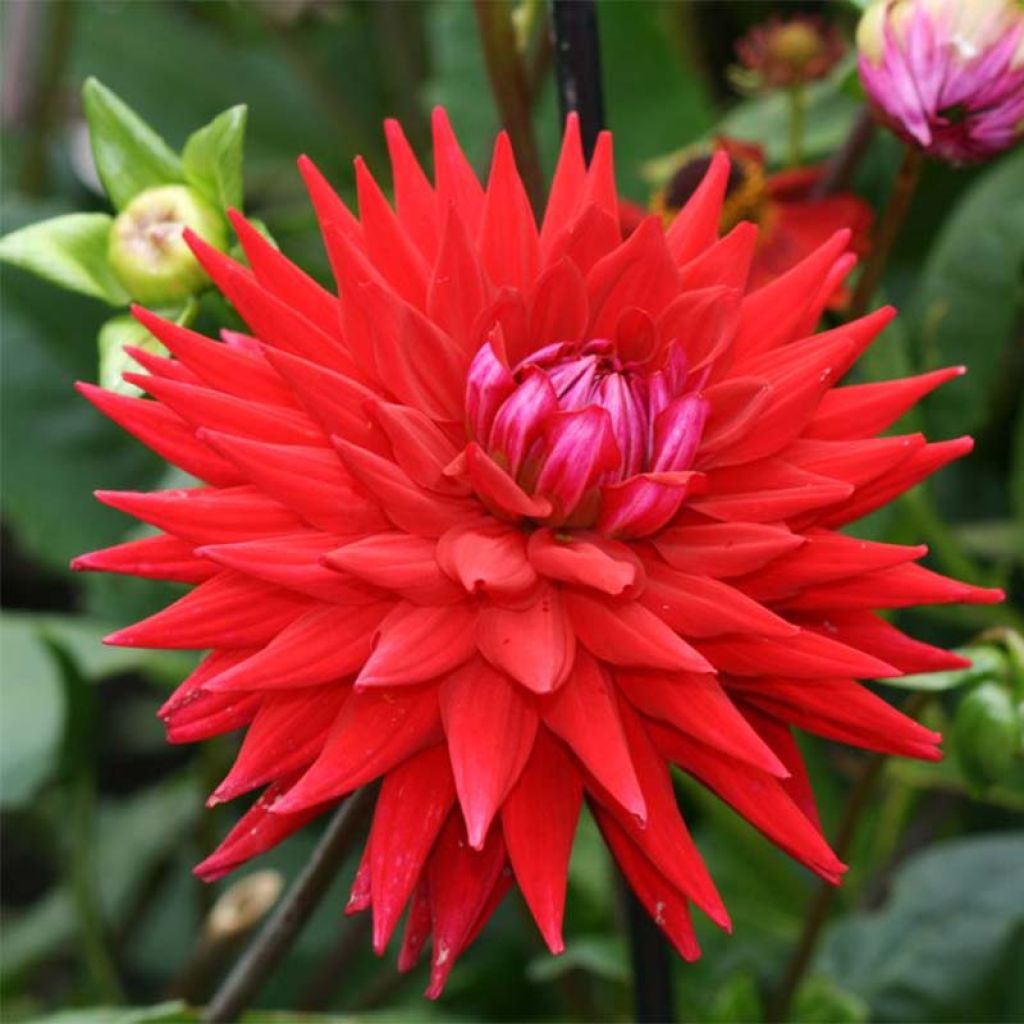

Dahlia Wittemans Best
Dahlia Wittemans Best
Dahlia Witteman's Best
Dahlia
Very beautiful plants..
Monique C., 02/11/2022
Special offer!
Receive a €20 voucher for any order over €90 (excluding delivery costs, credit notes, and plastic-free options)!
1- Add your favorite plants to your cart.
2- Once you have reached €90, confirm your order (you can even choose the delivery date!).
3- As soon as your order is shipped, you will receive an email containing your voucher code, valid for 3 months (90 days).
Your voucher is unique and can only be used once, for any order with a minimum value of €20, excluding delivery costs.
Can be combined with other current offers, non-divisible and non-refundable.
Home or relay delivery (depending on size and destination)
Schedule delivery date,
and select date in basket
This plant carries a 6 months recovery warranty
More information
We guarantee the quality of our plants for a full growing cycle, and will replace at our expense any plant that fails to recover under normal climatic and planting conditions.

Would this plant suit my garden?
Set up your Plantfit profile →
Description
The Dahlia 'Witteman's Best' (Superba) stands out in flower beds due to its tall stature and large flowers bristling with pointed petals, a crimson red, darkened at the heart with more purplish shades. Flowers with a contemporary style and striking colour will produce tirelessly and abundantly until the first cold on a bed of shiny leaves. This vigorous variety stands out at the back of sunny flower beds and in bold bouquets. For example, combine it with the plumes of amaranths, the fragrance of mignonette, and the silvery mounding of cineraria maritima...
Dahlias belong to the Asteraceae family and are originally from the high plateaus of Mexico. Currently, the approximately 25,000 horticultural varieties obtained by humans have invaded, to our great pleasure, gardens worldwide. They are hardy perennials with fleshy tubers. The 'Witteman's Best' variety, introduced in 1991, forms a bushy clump about 1.30 m (4ft) high on average and 50-60 m (164-197ft) wide in 3 to 4 months. This cultivar belongs to the decorative dahlias with cactus flowers, or more precisely, semi-cactus; it is a horticultural category defined by the shape of the flower. In this group, the coloured ligules of the head only partially coil up for at least 1/3 of their length. The flowering of this variety begins in July and ends in October. The heads measure 15 to 20 cm (6 to 8in) in diameter, with ligules of an intense satin red colour on the outside, darkening significantly towards the small centre of the head, almost appearing purple. The habit is bushy and upright, and the solid, very branched stems are hollow and dark red. Its leaves are opposite, pinnately divided into 3 or 5 toothed lobes. The leaves and stems are shiny and dark green.
To extend the flowering period and promote repeat flowering, remove faded flowers. Even better, regularly cut them to create charming, colourful bouquets by combining several varieties.
'Witteman's Best' enhances the pastel and delicate blooms of phlox paniculata, Salvia leucantha, campanulas, cosmos, and other hastate verbenas. It also pairs particularly well with the wine-coloured plumes of foxgloves, castor oil plants, Ysatis, and large daisies. It will also perfectly match Echinaceas, Heleniums, and crested hair grass in flower beds. With Sedums and miscanthus, it will also create a lovely original mix.
As a star plant for borders and herb gardens, Dahlias confidently accompany the most beautiful flowers but are also appreciated alongside vegetable plants. In Mexico, this tuberous plant was first cultivated as a root vegetable for consumption. However, its poor taste qualities relegated it to the status of an ornamental plant. Since then, the interest in their beautiful exuberance has never waned.
Dahlia Wittemans Best in pictures
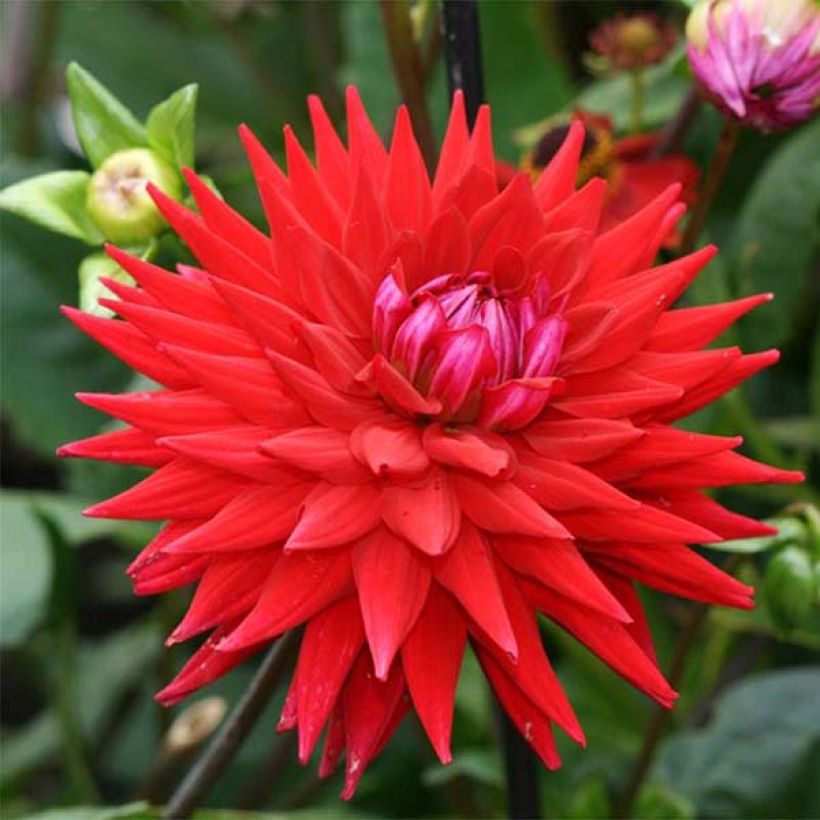

Plant habit
Flowering
Foliage
Botanical data
Dahlia
Witteman's Best
Asteraceae
Dahlia
Cultivar or hybrid
Other Cactus Dahlia
View all →Planting and care
The Dahlia 'Witteman's Best' is easy to grow in all regions. For abundant flowering, it is good to follow a few simple rules: plant the tubers in full sun as soon as the last frost has passed; rich, fresh, and well-drained soils are perfect. However, stagnant humidity would promote tuber rot. Do not hesitate to amend the soil with compost and sand if necessary. Work the soil deeply and enrich it, for example, with blood, fish and bone. Place your tuber and crumble the soil well to fill without air pockets. Your dahlia should be covered with about 6 cm (2in) of soil. At the end of planting, water once abundantly, then repeat this watering regularly during the first six weeks to help with rooting. Dahlias are sensitive to cold, so they need to be overwintered. In November, the first frosts cause the foliage to turn black, which is the time to remove them. Carefully dig up the tubers, clearing as much soil as possible. Let the foliage dry so that the tubers can replenish their reserves. Then cut the stems to 10 cm (4in). Spread your bulbs in a box of newspaper.
Store them in a frost-free, dry, cool, and dark place, such as a frost-free garage or attic, for example. In milder regions experiencing only a few days of frost per year, it is possible to leave them in place. In this case, simply cover the soil with a layer of leaves or straw for protection. This tall Dahlia, with its hollow stems, does not withstand wind or heavy rain well. To overcome this inconvenience, you can stake it, but let's agree, it's not very aesthetic. However, by pinching the stems early or removing the axial flower buds, you can spread out the plant's habit, which will offer more resistance to bad weather. At the same time, you channel the sap flow to a single flower, which will become larger and stronger.
Planting period
Intended location
Care
Planting & care advice
-
, onOrder confirmed
Reply from on Promesse de fleurs
Similar products
Haven't found what you were looking for?
Hardiness is the lowest winter temperature a plant can endure without suffering serious damage or even dying. However, hardiness is affected by location (a sheltered area, such as a patio), protection (winter cover) and soil type (hardiness is improved by well-drained soil).

Photo Sharing Terms & Conditions
In order to encourage gardeners to interact and share their experiences, Promesse de fleurs offers various media enabling content to be uploaded onto its Site - in particular via the ‘Photo sharing’ module.
The User agrees to refrain from:
- Posting any content that is illegal, prejudicial, insulting, racist, inciteful to hatred, revisionist, contrary to public decency, that infringes on privacy or on the privacy rights of third parties, in particular the publicity rights of persons and goods, intellectual property rights, or the right to privacy.
- Submitting content on behalf of a third party;
- Impersonate the identity of a third party and/or publish any personal information about a third party;
In general, the User undertakes to refrain from any unethical behaviour.
All Content (in particular text, comments, files, images, photos, videos, creative works, etc.), which may be subject to property or intellectual property rights, image or other private rights, shall remain the property of the User, subject to the limited rights granted by the terms of the licence granted by Promesse de fleurs as stated below. Users are at liberty to publish or not to publish such Content on the Site, notably via the ‘Photo Sharing’ facility, and accept that this Content shall be made public and freely accessible, notably on the Internet.
Users further acknowledge, undertake to have ,and guarantee that they hold all necessary rights and permissions to publish such material on the Site, in particular with regard to the legislation in force pertaining to any privacy, property, intellectual property, image, or contractual rights, or rights of any other nature. By publishing such Content on the Site, Users acknowledge accepting full liability as publishers of the Content within the meaning of the law, and grant Promesse de fleurs, free of charge, an inclusive, worldwide licence for the said Content for the entire duration of its publication, including all reproduction, representation, up/downloading, displaying, performing, transmission, and storage rights.
Users also grant permission for their name to be linked to the Content and accept that this link may not always be made available.
By engaging in posting material, Users consent to their Content becoming automatically accessible on the Internet, in particular on other sites and/or blogs and/or web pages of the Promesse de fleurs site, including in particular social pages and the Promesse de fleurs catalogue.
Users may secure the removal of entrusted content free of charge by issuing a simple request via our contact form.
The flowering period indicated on our website applies to countries and regions located in USDA zone 8 (France, the United Kingdom, Ireland, the Netherlands, etc.)
It will vary according to where you live:
- In zones 9 to 10 (Italy, Spain, Greece, etc.), flowering will occur about 2 to 4 weeks earlier.
- In zones 6 to 7 (Germany, Poland, Slovenia, and lower mountainous regions), flowering will be delayed by 2 to 3 weeks.
- In zone 5 (Central Europe, Scandinavia), blooming will be delayed by 3 to 5 weeks.
In temperate climates, pruning of spring-flowering shrubs (forsythia, spireas, etc.) should be done just after flowering.
Pruning of summer-flowering shrubs (Indian Lilac, Perovskia, etc.) can be done in winter or spring.
In cold regions as well as with frost-sensitive plants, avoid pruning too early when severe frosts may still occur.
The planting period indicated on our website applies to countries and regions located in USDA zone 8 (France, United Kingdom, Ireland, Netherlands).
It will vary according to where you live:
- In Mediterranean zones (Marseille, Madrid, Milan, etc.), autumn and winter are the best planting periods.
- In continental zones (Strasbourg, Munich, Vienna, etc.), delay planting by 2 to 3 weeks in spring and bring it forward by 2 to 4 weeks in autumn.
- In mountainous regions (the Alps, Pyrenees, Carpathians, etc.), it is best to plant in late spring (May-June) or late summer (August-September).
The harvesting period indicated on our website applies to countries and regions in USDA zone 8 (France, England, Ireland, the Netherlands).
In colder areas (Scandinavia, Poland, Austria...) fruit and vegetable harvests are likely to be delayed by 3-4 weeks.
In warmer areas (Italy, Spain, Greece, etc.), harvesting will probably take place earlier, depending on weather conditions.
The sowing periods indicated on our website apply to countries and regions within USDA Zone 8 (France, UK, Ireland, Netherlands).
In colder areas (Scandinavia, Poland, Austria...), delay any outdoor sowing by 3-4 weeks, or sow under glass.
In warmer climes (Italy, Spain, Greece, etc.), bring outdoor sowing forward by a few weeks.































